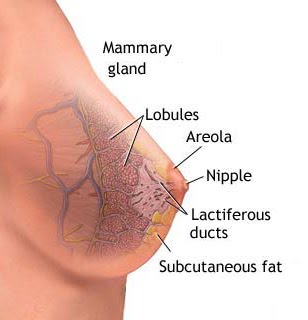Ο ΛΟΒΙΔΙΑΚΟΣ ΚΑΡΚΙΝΟΣ ΤΟΥ ΜΑΣΤΟY

EPIDEMIOLOGY
The true incidence and prevalence of LCIS is difficult to estimate because it gives pure diagnostic findings by palpation and gross clinical examination and mammography. In recent years the incidence of LCIS has increased due to increased numbers of biopsies for non-LCIS abnormalities.
LCIS occur most commonly in premenopausal women.
When the diagnosis of LCIS is established there is a 0-6% chance that the patients has a synchronous invasive breast cancer. 60 –70% of these invasive cancer are ductal carcinoma.
DIAGNOSIS
Because the LCIS is difficult to diangosed by clinical examination or mammographycaly, most commonly diagnosed as an incidental finding in biopsies.
The diagnosis involves the differentiations of LCIS from other benigns abnormalities and from invasive lesions.
TREATMENT
There are two therapeutic options for LCIS. The first one is the close clinical observations, and the second the surgical procedure to remove all the tissue at high risk of developing invasive breast cancer. The immediate breast reconstruction is necessary. Because there is no risk of regional nodes metastasis, the axillary dissection is not recommended.
Contralateral mirror-image biopsies is of value because the negative biopsy do not eliminate the need for close observation the residual tissue.
Adjuvant chemotherapy is not indicated. On the other hand tamoxifen reduces the risk of developing an invasive breast cancer.
